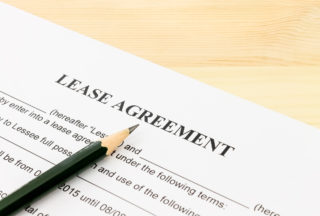Navigating California Cannabis Leases in 2019
CaliforniaReal EstateUncategorized January 7, 2019 MJ Shareholders

 We’ve previously written about some of the pitfalls for landlords to avoid when leasing to commercial cannabis tenants in California. We’ve also recently discussed some relevant issues for landlords created by the state’s near-final regulations. And we’ve also looked at some of the biggest uncertainties remaining after the state issued those regulations. Now that we have a clearer picture of what the regulatory regime will look like in 2019, here are some issues we’ve encountered in practice that both landlords and tenants should consider before finalizing a commercial cannabis lease in California.
We’ve previously written about some of the pitfalls for landlords to avoid when leasing to commercial cannabis tenants in California. We’ve also recently discussed some relevant issues for landlords created by the state’s near-final regulations. And we’ve also looked at some of the biggest uncertainties remaining after the state issued those regulations. Now that we have a clearer picture of what the regulatory regime will look like in 2019, here are some issues we’ve encountered in practice that both landlords and tenants should consider before finalizing a commercial cannabis lease in California.
Status of Cannabis Enforcement in California
As of today, the cannabis plant (which includes hemp), including any parts of the cannabis plant and all derivatives therefrom, remains a Schedule I controlled substance that is illegal under the Controlled Substances Act, except to the extent it contains a THC concentration of not more than 0.3% on a dry weight basis (i.e. not psychoactive), in which case it is now legal under federal law thanks to the 2018 Farm Bill. This confusing result follows a year in which the federal government, despite some early drum-beating about a resurgence of the drug war, made clear time and time again that its priorities when it comes to cannabis enforcement are illegal grows on federal land and organized crime. There has been no crackdown on state-licensed cannabis businesses in California (or elsewhere, as far as we know), and on the other side of the equation, the legalization and decriminalization movement has forged ahead to now include several more states, Canada and Mexico, and an incoming Democratic House leadership that has pointedly prioritized the issue in line with surging public support nationwide. Still, however unlikely federal enforcement efforts against state-legal cannabis businesses may seem, until full federal legalization occurs, landlords and tenants alike should consider building contingencies into the lease to anticipate enforcement actions and how they will affect the tenancy.
Structuring the Tenancy Relationship
Even before California came out with its new regulations, it was still a risky proposal for landlords to accept ownership in or profits of a cannabis tenant in lieu of rent. That concern has become even more salient under the state’s new regulations, since landlords can unintentionally become undisclosed “owner” or “financial interest holders” of the tenant cannabis business, thereby subjecting themselves to unanticipated and burdensome disclosure and vetting requirements. The parties to the lease should consider the unintended consequences of anything other than an arms-length tenancy and pay careful attention to the new regulations on point.
Licensing and Permitting Contingencies
The easily obtainable temporary state cannabis license is a thing of the past; now applicants must submit the full annual license application, which is far more robust and demanding (although applicants can now obtain provisional licenses if they previously held a temporary license, they can only do so after submitting a full annual application). Similarly, it can take months for an applicant to obtain a conditional use permit in localities that require one, which is common. Understandably, neither landlord nor tenant will know quite how they feel about the tenancy–and how much they want to invest in tenant improvements–until there is more certainty on licensing. A common solution has been to build into the lease an anticipated licensing timeline with benchmark contingencies that allow the parties to evaluate progress and decide whether to terminate if there is not enough.
Operating Expenses
Cannabis tenancies often involve unexpected costs that neither party fully anticipated, which can create a problem especially for multi-tenant properties. For example, you can expect that the landlord’s building insurance policy will not allow for a cannabis tenant and that the replacement policy will be more expensive. Cannabis businesses in California have to comply with strict security protocols that require security cameras, fencing, and security guards on site, and depending on what the existing uses are at the leased premises and the needs of other tenants, adding a cannabis tenant could create unique requirements that upset the existing proportional allocation of operating expense, and this should be addressed up front in the lease. If a cannabis tenant is a manufacturer or an indoor cultivator, it’s also likely that utility usage will not only increase beyond that of other tenants on a multi-tenant premises, but that additional water or electricity infrastructure will need to be installed to accommodate the increased usage, thereby creating additional capital improvement costs that need to be amortized and proportionally allocated. Another issue that comes up is cannabis waste management: for one, cannabis licensees—especially cultivators—must have strict waste management protocols in place that include securing waste on site or hauling it away under strict requirements. The regular building garbage service will likely not be a good match for a cannabis tenant.
For more on California cannabis leasing, check out the following:
MJ Shareholders
MJShareholders.com is the largest dedicated financial network and leading corporate communications firm serving the legal cannabis industry. Our network aims to connect public marijuana companies with these focused cannabis audiences across the US and Canada that are critical for growth: Short and long term cannabis investors Active funding sources Mainstream media Business leaders Cannabis consumers









